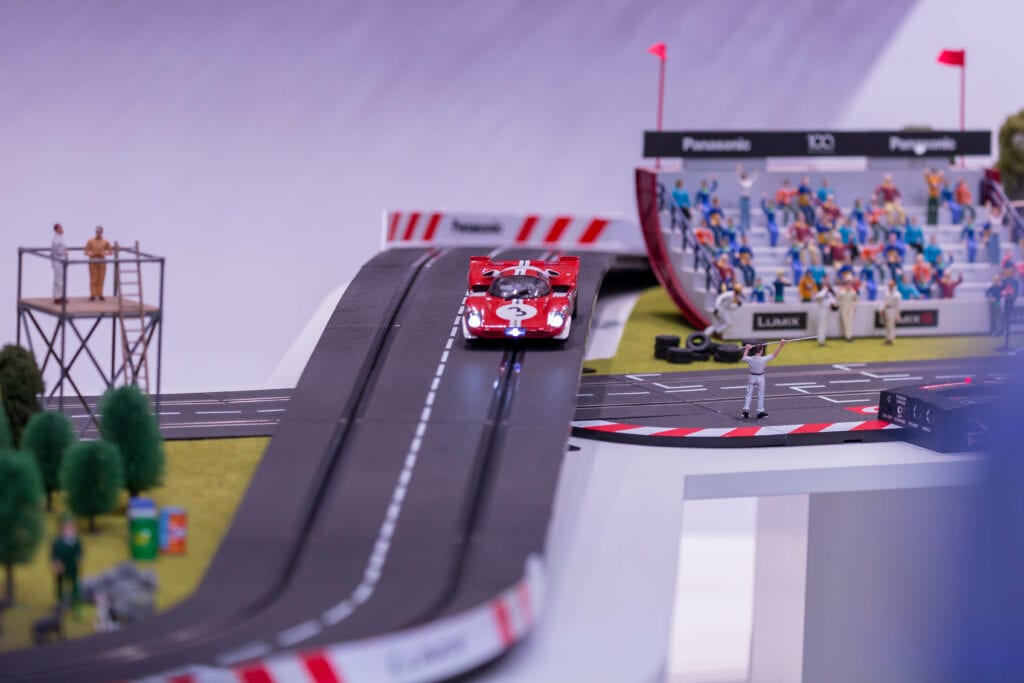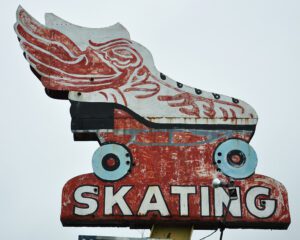Believe it or not, slot cars made their debut in 1912 when Lionel manufactured its first slot cars and track. However, the company ditched the cars for model trains in 1915. Forty years later, a British slot car enthusiast club called the Southport Model Engineering Society created a 60-foot long track for 1:32 scale cars. Thus began the slot car racing era.

In 1957, a U.K. company called Minimodels introduced its first Scalextric slot cars such as a C55 Vanwall and a C54 Lotus. In 1963, Scalextric introduced its first car with working headlights, an MM/E1 Lister Jaguar.
The slot car craze caught on in the U.S., and by the mid-1960s any self-respecting town boasted a slot-car “center,” where kids could bring their cars to race on enormous banked tracks. Major American manufacturers were Tyco, Aurora, and Revell.
When I was in junior high there was a hobby shop called Hobby Land on East Dewey on the south side of the street next to the alley. GiGi’s is currently in that location.
The track was huge (at least it seemed so at that age) and was in the back of the store. For a mere couple of bucks, you could be Parnelli Jones for most of the day.
My friend Daryl Howard said he never owned a slot car but remembers renting them at the hobby shop.
The cars were miniature marvels—you had a basic chassis on which you could put a large selection of bodies. I had two slot cars, one was a 1957 Chevy and the other was a 1962 Corvette. You could change out wheels and tires, electric motors, gears, axles, etc., to tweak your “mean machine.” There was also a rubber conditioner to make the tires more pliable. I, however, was too cheap to buy it and used Clorox instead.
The track had multiple lanes and a hand-held controller for each line. The car had a graphite guide that kept it in the lane and transferred electrical power from the track to the car.
Although it was immensely enjoyable, it took a great deal of skill to keep the car from going off the track and to maintain it during a race. You had to be a race car driver and pit crew all rolled up in one. I can remember several instances of having to quickly change out parts that had failed in order to get back on the track as soon as possible.
There were occasional contests and prizes offered to the winner. I also recall one young lad challenging me to race “for pink slips” (in early hot rod days teenagers would put up the title to their car as the ante for a race). Fortunately, I won and did not have to relinquish my prized Corvette.
As with most fads, this one too faded. At one time sales of slot cars and accessories reached $500 million annually, and there were 3,000 courses nationwide. By the late 1970s, slot car racing centers had become nearly non-existent. In the last few years, there has been a small resurgence in the pastime, mainly by old geezers like me.










